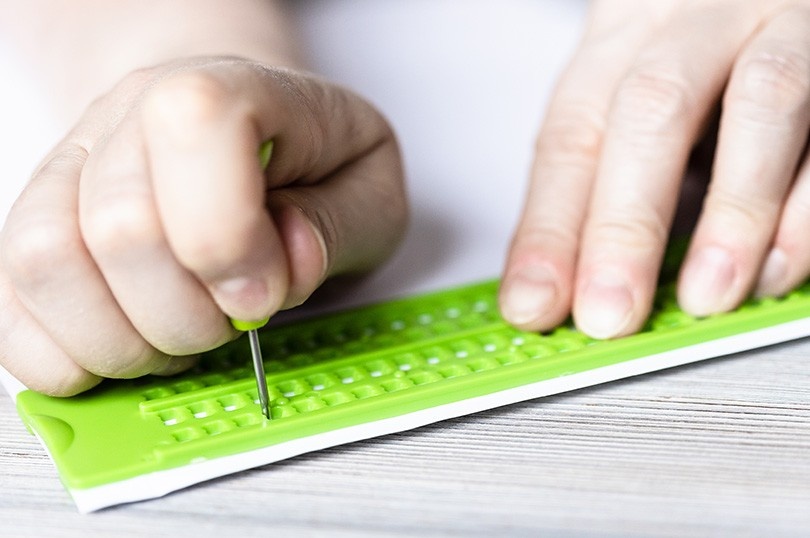Low vision rehabilitation

PhD-student:
Yaser Alnasery
PIs/Co-PIs:
Yaser Alnasery, PhD candidate, Kaitlin Sibbald, PhD candidate, Andria Kosel, OT Reg (NS), Victoria Godin, OT Reg (NS)
Supervisor:
Tanya L Packer, PhD OT Reg (NS)
Study Summary;
Introduction: Reading is one of the main occupations that people with low vision name when setting goals and priorities yet, devices to assist with this goal are often abandoned. While many Assistive Technology Devices (ATDs) are available, not much is known about how and why people with low vision are choosing their reading devices. This review aims to understand what ATDs people with low vision prefer to use for reading, as well as how and why these ATDs were selected.
Methods: This scoping review was based on the six stages of Arksey and O’Malley’s (2005) framework. A research team, consisting of the primary investigator, an experienced researcher in the field of low vision and three occupational therapists, was compiled. Articles were retrieved from thirteen online databases and went through a two-level screening process. Using the Human Activity Assistive Technology (HAAT) model, we extracted data on the types and characteristics of technology used for reading as well as people’s opinion regarding how and why they have selected their ATDs.
Results: The most common reading devices examined in the studies were magnifiers. Although the data showed that most of the older adults in different studies used or preferred to use low technology ATD, it was not clear if they preferred this type of device because they liked its features or simply because they lack the necessary training and access to use other high-technology devices. The most commonly referenced reason for choosing a device was technology features such as ease of navigation, brightness, contrast, compatibility with other technology and a natural sounding voice. Finally, the most common way that participants obtained technology was that it was prescribed by a professional such as ophthalmologists, optician, and occupational therapists, often following a low vision assessment.
Takeaway points:
1) The features of a device might be one of the main influences that lead clients to use a specific device, but other factors have more influence collectively which are: the emotional factors, and factors not related to device features such as cost, training, and social influences.
2) Clients usually use multiple devices depending on the type of reading and location or environment where they are reading.
3) More information needed about the source of ATDs used by clients with low vision to know how to best allocate resources and understand other factors might influence clients’ choice of ATDs.
Sensitivity and specificity of a new screening tool for identifying the need of low vision rehabilitation (LVR) services among people with low vision.
PhD-student:
Yaser Alnasery
Investigators:
PIs/Co-PIs: Yaser Alnasery, PhD candidate
Supervisor: Tanya L Packer, PhD, Darren Oystreck, PhD, Parisa Ghanouni, PhD
Study Summary:
Background: Poor referral rates create barriers for many clients with low vision to access LVR services at the right time when they most need them. In most practices, the referral either does not occur or is deferred until clients' clinical indicators – such as visual acuity – decline to severe levels. To encourage early referral, clinicians need to know the items most important to measure and the degree of impact that indicate a need for referral to LVR services. Even though previous studies have identified several items that associate with people who need LVR, the exact cutoff point for these items is missing to know when a referral is required.
Objective: This project aims to find the fewest combination of items that could efficiently identify who need LVR services to develop a screening tool. The screening tool aims to assist clinicians to refer clients – over 12 years old – who will most likely benefit from LVR services.
Question: What combination of variables provide sufficient sensitivity and specificity to predict the need for low vision rehabilitation (LVR) services for clients over 12 years old?
Methodology: The study will follow a cross-sectional study design, with data obtained at one period of time. Participants of any gender – over 12 years old – with any eye condition will be included. Bujang and Adnan (2016) provide a reference table to determine the required sample size for sensitivity and specificity analysis. The study will collect demographic information, providing details needed to describe the participants. Outcome variables will be collected to create the required standard reference to categorize participants into two groups: those who need LVR and those who do not – a required first step for sensitivity and specificity analysis. Predictor variables will be collected and tested to find the fewest items that predict the need for LVR. Data analysis will be conducted separately for adult (above 18 years old) and youth (12 – 17 years old) groups. Receiver operating characteristic (ROC) curve and area under the curve (AUC) analysis will be conducted to find the best combination of items and determine the cutoff score. The best combination of items will be chosen for the development of LVR screening tool.
